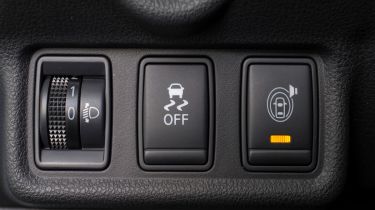Traction Control – what is it, and how does it work?
All new cars are equipped with a traction control system but do you know how it works and when to switch it off?

Traction control is a safety feature that has existed for decades in various forms, but it became a compulsory requirement on all new cars built from 2011 onwards. As with many car safety features, it runs in the background and you may never even notice it, but a car fitted with traction control is undoubtedly safer than one without.
Put simply, traction control is an electronic system that uses the same sensors as the anti-lock braking system (ABS) to reduce or prevent wheelspin. If a wheel is spinning this means the tyre is no longer effectively gripping the road surface, this could then lead to oversteer (where the back of the car steps out of line) or understeer (where the car doesn’t respond enough to your steering inputs), both of which could prove highly dangerous on the road.
When was traction control introduced?
Traction control systems have been used in passenger cars as far back as the 1970s but technological limitations meant that these earlier systems weren’t particularly reliable or widespread. It wasn’t until the late 1980s and early 1990s that traction control started to become more commonplace and sophisticated. Like much of the standard equipment we’re accustomed to in cars these days, the gradual standardisation of traction control is a result of the increasing use of complex electronic systems within our cars.
To start with companies such as Mercedes-Benz and BMW made traction control available on their high-end S-Class and 7 Series models and it has gradually filtered down to lower priced models and out to other manufacturers.
How does traction control work?
The basic purpose of traction control is to detect when a tyre loses grip, causing the wheel to spin, and then work to stop or slow down the rate of spin. If the ABS sensors detect that a wheel is spinning, the vehicle’s on-board computer will momentarily cut the engine’s output to allow the wheel to slow and, ideally, regain traction.

Traction control can be fitted to a front-, rear- or all-wheel drive vehicle and the principle is the same no matter which wheels are driven. In some cars this can almost feel as if there is a slight hesitation in the power delivery, or even feel like the engine has developed a misfire, but generally speaking modern traction control systems are so sophisticated that their intervention is often not detected from behind the wheel.
In addition to traction control, most new cars also have an Electronic Stability Control system (often called ESP or ESC) which takes traction control one stage further by momentarily applying the brake to the wheel that is rotating faster than the others. Some systems can also shuffle the engine’s power to the wheels that have the most traction.
How do I know it’s working?
As with many safety systems, the traction control system has a dashboard warning light that will briefly illuminate on startup to show that the system is operational. If the light stays on and does not extinguish when the engine is started, then this is indicating a fault with the system, so this will need to be checked by a professional - A permanently illuminated traction control warning light will be an MoT failure, too.
If the warning light briefly illuminates when driving, the system is in active operation and working to prevent wheelspin. Traction control is most likely to activate when driving in inclement conditions - such as heavy rain, snow or ice - or it may indicate a diesel spill or loose road surface under the tyres. If the system starts to kick-in more frequently, this could be a sign of excessively worn tyres.
Should I ever switch traction control off?
We wouldn’t recommend turning traction control off during normal road driving – it doesn’t matter how good a driver you are, the traction control system can act to prevent a loss of control far faster than you are able to react behind the wheel.
However, there are some circumstances where it’s advisable to disable the system. If you’re driving on snow or ice or in very muddy conditions then the amount of grip available to the tyres will be severely restricted and in these circumstances it’s preferable to have some wheelspin to try and gain some traction. If the traction system keeps detecting a spinning wheel in these conditions it will keep reducing the power which won’t help in giving the car any momentum.
So if you find yourself driving on mud, snow or ice consider switching the system off if you feel the car is getting stuck. It’s generally a switch that will be marked with something like ASR, TSC, ESC or ESP depending on the car’s manufacturer, while on some vehicles it’ll be in one of the menus on the car’s on-board infotainment system.
Looking to do some serious off-roading? Take a look at our list of the best 4x4s and off-road cars to buy...
Find a car with the experts





